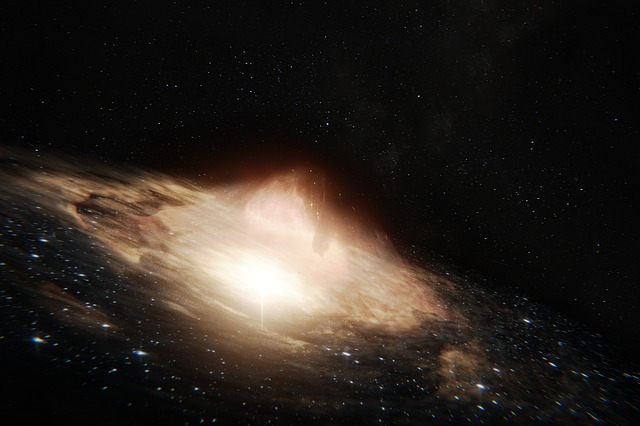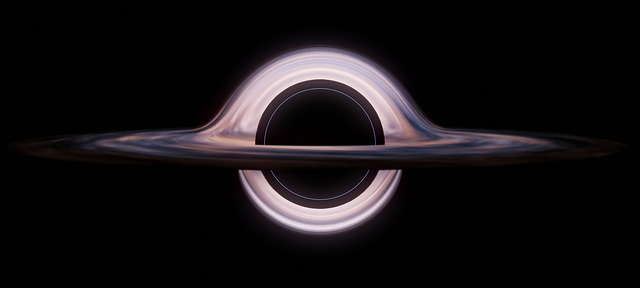*This post may contain affiliate links. This means we may make a commission if you purchase an item using one of our links*
A blazar is in essence a quasar that is pointing directly towards Earth, ejecting different radio waves and even gravitational waves towards us, whereas a black hole, particularly supermassive black holes are what power blazars to shine as bright as they do and eject said particles towards Earth.
For a more thorough breakdown of what a blazar is and how black holes function along with the major differences between the two, continue reading.
What Is A Blazar?
Table of Contents

Blazars are a subcategory of quasars, meaning they are one variation of the active galactic nucleus surrounding supermassive black holes.
What differentiates them from other quasars is that they specifically propel high powered jet particles towards Earth.
These jet particles travel at the speed of light towards us, and as was discovered by the IceCube instrument, they allowed us to understand a new particle which would fall under the lepton classification, neutrinos. Much like how quarks make up the majority of matter around us, leptons like neutrinos play a part in this too.
Blazars are very similar to a quasar as they require a bucket load of material build up at the center of a supermassive black hole to form.
There will be an extremely bright excretion disk surrounding these stupendously large black holes that will eject objects at a relativistic speeds towards us, which would essentially be at the speed of light.
Blazars are also some of the oldest resources out in the universe as they allow us to observe the goings on of interstellar objects, millions to billions of years in the past whether it be through the x-rays or gamma rays projected our way, through the gravitational waves or just via the light it produces.
In essence just like any other quasar they will produce arguably the brightest luminosity in the cosmos, last for roughly 10 million years and are angled in such a way that the jet particles propelled are towards Earth.
As result of this angular disposition that blazars have, which isn’t a very normal occurrence, blazars are in turn very rare. That’s why at this moment in time we have only discovered 5.
What Is A Black Hole?

A black hole is created when a large star about 3 – 4 solar masses large collapses below its Schwarzschild radius causing a supernova explosion. The density of the star creates a massive gravitational pocket and pulls everything within its vicinity into it.
The edge of a black hole is known as the event horizon and once something crosses this point, there is no escape. The gravitational pull of a black hole is so immense that even light is sucked inside.
All objects pulled in are subjected to an unimaginable crushing gravitational force as they are pulled toward the super dense end point of the black hole known as the singularity.
Black holes can be split into a variety of different types such as a intermediate mass black hole, stellar mass black hole and the supermassive black hole.
Stellar mass black holes are formed as described above by the death of a large star collapsing inward on itself adn tend to be around 3 – 10 solar masses.
An intermediate mass black hole are larger variants of the more typical stellar mass black holes as their mass will range between 100 – 1000 solar masses.
They may form be acquiring stars within its reach, to grow in mass however, we have not discovered very many so research on these objects is still in its infancy.
Supermassive black holes are the largest types of black holes, typically found in the center of a galaxy with solar masses in the millions, upwards of multiple billions.
Similarities Between A Blazar And Black Hole
Blazars and black holes are both connected in the sense that, blazars require a black hole to function and ultimately shine as bright as they do.
Granted the black hole has to be many magnitudes greater in size than those that are freshly formed after a large star has died but, the bottom line is that without a black hole, blazars are not able to exist (at least not as we know them to be today)
Both are also some of the oldest entities to exist as some blazar like entities have been observed to exist some 13 billion years in the past.
Differences Between A Blazar And Black Hole
As for what the differences are between the 2, they include the following:
- Blazars are amongst the brightest objects in our universe whereas black holes are amongst the darkest entities in the universe.
- Blazers are formed when a large quantity of materials fall in the accretion disc of a black hole that heats up and eventually is set alight creating the intense, luminous light waves that make their way towards. Black holes on the other hand are formed when a large star that is 20+ solar masses collapses into itself, forming a supernova in turn creating the dense, circular darkness we’re all too familiar with.
- Black holes range in size from 3 solar masses upwards of billions of solar masses whilst the typical blazar would be situated on the surroundings of a black hole so its possible that blazars could theoretically be bigger.
- At this moment in time we have discovers only 5 gamma-ray blazars whereas the Milky way alone is said to have 100 million stellar mass black holes alone.
- Black holes are very close to absolute zero in temperature whilst blazars are scorching hot, where much like quasars it’s possible for them to be billions to hundreds of billions of degrees Celsius.
- Black holes allow no light to escape if it happens to enter its event horizon whilst blazars are most likely to burn everything in its vicinity to cinders.
- Black holes can live for an unimaginable time where it’s estimated that some supermassive black holes can live around 10^100 years whereas a blazar, just like any other quasar can only live for around 10 million years before it runs out of juice.
Summary
Ultimately a black hole and blazar are very different entities, as a blazar is essentially a quasar meaning its more or less the hottest and brightest object in the universe and black holes conversely are amongst the coldest and darkest entities in the known universe.
They obviously do connect in the sense that supermassive black holes need to be around for blazars or any other quasar to form but, they clearly are on the opposites ends of the spectra when it comes to how they function.

